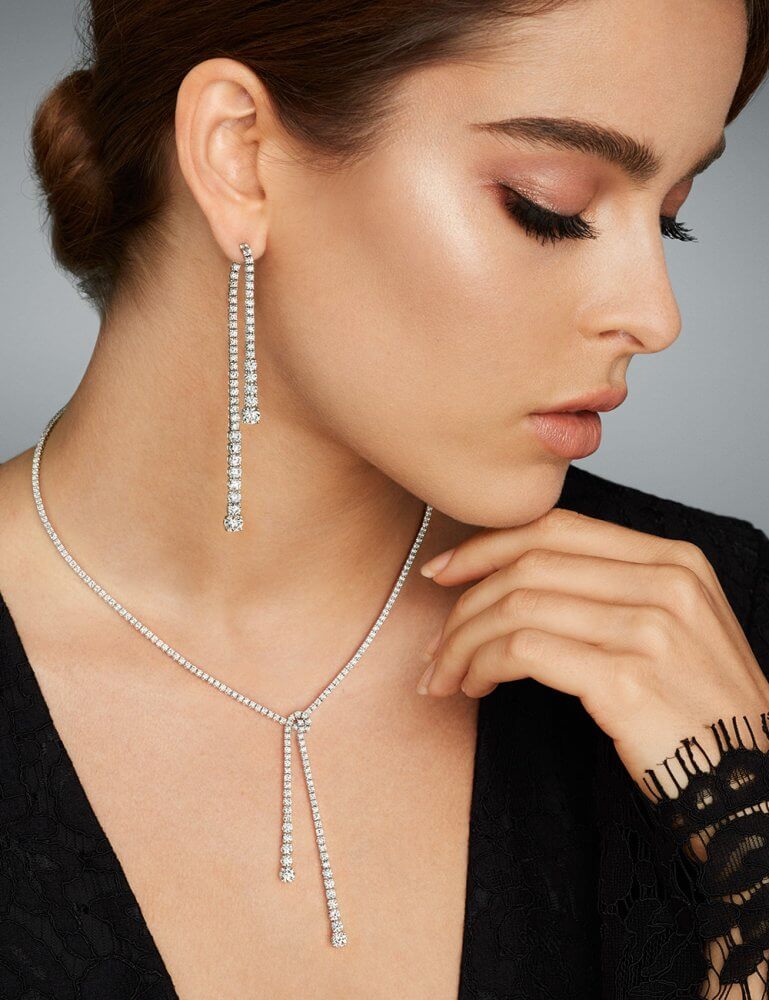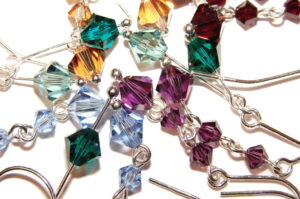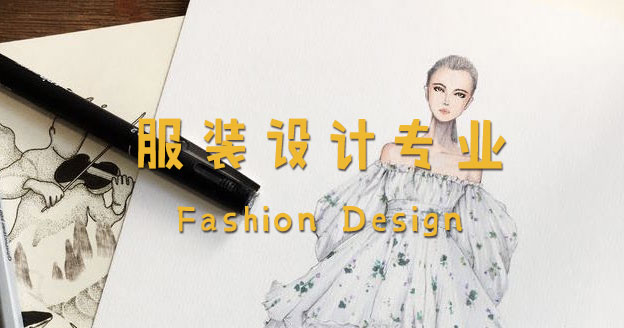[Introduction] People all over the world appreciate the beauty of gemstones and admire its mystery. So, the gem and jewelry industry is everywhere, no matter where you go. The jewelry industry is one where art and business are closely linked. We believe many students who are interested in this field will want to know more. So, for the major that is tied to this profession: Jewelry Arts, which schools offer this major in Canada? What professional skills are taught? What are the employment prospects and salaries? How do netizens and UtoCanada view this major?
Introduction to the Canadian Jewelry Arts major

Many people believe that jewelry is not only a luxury but also a work of art. Good jewelry is a symbol of identity and status. The design, material selection, production, finishing, and marketing of a piece of jewelry go through many complicated processes and procedures. This is quite a niche major, that allows you to turn your interest into a profession.
So, what is special about the jewelry arts major?
In order of the length of the programs, there is a one-year Jewelry Essentials certificate program, a two-year Jewelry Methods college diploma program, and a three-year Jewelry Arts advanced diploma program.
This major is generally offered in colleges, offering different qualifications such as certificates, college diplomas and graduate degrees.According to the different needs of students, Canadian colleges offer different courses and encourage students to conduct more in-depth professional learning.
Students will be exposed to courses including jewelry design, drawing and illustration, and material research, jewelry brand marketing management and other courses.Some colleges includejewelry history, technical drawing, gemology and industry overview, etc., providing students with a wide range of knowledge in the field of jewelry.
Jewelry professional courses pay more attention to the cultivation of "artisan spirit."By understanding and learning how to integrate each element of the design and execution process in the production of each piece of jewelry, as well as marketing and portfolio creation,it gives them the opportunity to act as the designer and the craftsman so they can start their own business.
Related design majors:
What knowledge and skills do students learn in the Canadian jewelry major?

With different programs, the learning content varies. In general, if you are studying jewelry arts for three years, the skills you will learn are:
- Weld using appropriate soldering techniques.
- Use different techniques to shape metal objects.
- Use different materials in combination to create projects.
- Design jewelry according to customer requirements.
- Design and manufacture wax carvings and castings.
- Casting molds and casting jewelry are produced by centrifugal or vacuum methods.
- Use one or more methods to produce various surface treatments, coatings, textures, sandblasting, lamination, or grinding and polishing.
- Use semi-precious materials that have been anodized to produce all kinds of jewelry
- Gold jewelry, silver jewelry, and rhodium-plated jewelry.
- Use stamping and pressure forming to create pieces of jewelry
The jewelry industry also has requirements for personal physical conditions: good vision (corrected vision), high manual flexibility, ability to control fine motors, interest in machinery, and drawing skills. At the same time, the major requires students to have strong patience and initiative, sensitivity to jewelry and fashion trends and certain social skills are also conducive to future career choices. If you have a strong passion for jewelry and have the above abilities and skills, then this major is for you.
Employment prospects for Canadian jewelry arts graduates

One or two-year programs can prepare graduates for entry-level positions in the jewelry industry. The jewelry industry also offers a variety of opportunities, including manufacturing, repair, inlay, retail or wholesale, production of precious metal or fashion jewelry and accessories.
Graduates studying jewelry arts can choose a career as a bench jeweler or designer; as an expert in repairing jewelry or gems; or customizing of high-end jewelry. You can also start your own business, such as setting up a studio as a jeweler or a designer, producing, and marketing jewelry for customers. One can also be engaged in retail, wholesale or manufacturing of high-end jewelry or fashion pieces.
》Job description of a jewelry designer
According to the PayScale description,,
A jewelry designer designs various types of jewelry such as bracelets, necklaces, and rings. The designer may have to come up with innovative designs from scratch, while other positions will have design guidelines that need to be followed. The jewelry designer may work directly with customers and help customer’s ideas come to realization through verbal instructions or sketches.
The jewelry designer is often involved in building the jewelry as well. In some positions, the jewelry designer may also be involved in the sales of jewelry. The job may involve independent work, where deadlines for productivity need to be met. However, communication skills are important in order to work with customers, other designers, management, and third parties. Some positions may involve using 3D design programs such as Photoshop and Rhino, so experience with these programs may be necessary. The jewelry designer should keep abreast of changes and trends in the market in order to create products that will be enticing for customers. Therefore, some research skills are needed. This position is sometimes freelance, in which case commission may be involved.
Some positions may require the jewelry designer to have a degree from an art school, while others have no educational requirements.
- Develop and execute product designs to company's or customer's satisfaction.
- Prepare and finalize technical drawings of product to be used for mass production in overseas factories.
- Loose sketch design ideas/concepts in order to convey vision to the team.
- Interpret design/style trends into brand appropriate product that fits within targeted retail pricing.
- Research seasonal trends and color stories.
》Salary for graduates in jewelry design: The decisive factors & annual income
According to PayScale statistics,in Canada, the average annual salary for entry-level jewelry designers is $40,695 CAD, and the lower-end salary is at $31,200。

The best schools in Canada
Students can apply for 1 to 3 years of professional courses to obtain a certificate or college diploma.
The level of education depends on career goals. If you want to enter the jewelry industry as quickly as possible, then a one-year jewelry foundation certificate course will provide the necessary skills. Both Fleming College and George Brown College offer a one-year jewelry foundation course, through which students can learn and master the skills and skills needed to start a career in the jewelry industry. After graduation, they can become jewelers or jewelry designers and start to accumulate experience in this industry.
The two-year jewelry design major will provide more advanced courses to ensure that students have better professional knowledge. For example, graduates of the Jewelry and Metals College Diploma program at Georgian College are eligible to apply for the GLDS Goldsmithing and Silversmithing College Graduate Certificate program certified by the Canadian Jewelers Association.
The three-year jewelry arts major focuses on both the goldsmithing techniques and design skills, which are necessary to succeed as a jewellery designer and goldsmith. Students will learn about all aspects of jewelry making -- sawing, filing, soldering, casting, forging and decorative metal techniques such as inlay, filigree and chasing, and the particulars of working with silver and gold and gemstones. Students will acquire all the knowledge needed to master the skills in the jewelry industry, and will have a chance to participate in practice. At present, George Brown College offers this major.
Fleming College
Fleming College is located in the beautiful Kawartha Lakes area of Peterborough, providing students with a quiet learning environment. Fleming College has hundreds of courses, giving students from all over the world the best choices. The college awards both college diplomas and undergraduate degrees. Students may choose either post-secondary courses or university courses in partnership with Ontario universities.
The studio is well-furnished with a full complement of tools and anvils, eight individual soldering stations, and all the equipment you'll need for silversmithing, casting, raising, stone setting and chain making. Students will have their own jeweller's workbench equipped with a bench pin, task lighting and a foredom drill press. The entire studio space is bright and spacious and can accommodate 16 students, which is also the maximum number accepted into the program.
This program is equivalent to two semesters of full-time study, the intensive 15-week certificate program provides over 600 hours of hands-on studio time. Every week students work with a different faculty member who brings their unique perspective and expertise within the discipline to the studio. Small class sizes ensure that students have enough access to equipment and time to interact with faculty. Students will also benefit from the guidance of experienced studio technicians and extended hours in the studio after class.
The college is a leader in providing unique and flexible art and design education. Learn from professionals who have shaped art, craft and design in Canada at a campus that provides the best possible hands-on studio experience. Create in a spectacular natural environment, supported by dedicated faculty and a welcoming community of resident artists and designers. Graduate with a solid portfolio to take you to the next step in your art career – whether that is continuing education, starting your own practice, or entering the workforce.
George Brown College
George Brown College, founded in 1967, is a public, fully accredited college. It is currently one of the largest and most comprehensive colleges in Canada. Its reputation attracts thousands of people from Canada, and students from all over the world. It is also known as one of "Canadian public colleges whose graduates are most popular with employers."
George Brown College’s jewelry arts program is unique in the Greater Toronto Area. The college has the most comprehensive facilities and is one of the largest jewelry education providers in North America. The college offers three different jewelry programs:
The one-year Jewelry Essentials programprovides students with the skills and techniques necessary to begin a career in the jewellery industry.At the same time, the college encourages successful graduates who continue to pursue relevant education to apply for advanced degrees in other jewelry diploma programs to achieve their desired career goals.
The two-year Jewelry Methods program provides students with the necessary skills and abilities necessary to succeed in this demanding profession as a goldsmith/bench jeweler. The program focuses on basic skills such as measurement, sawing, filing, welding and finishing. Once the necessary skills are achieved, students can learn more advanced gold jewelry, jewelry repair, gem and model making, and jewelry elective subjects.
The three-year Jewelry Arts program will focus on both the goldsmithingtechniques and design skills that are necessary to succeed as a jewelry designer and goldsmith. Students can learn about all aspects of jewelry making – – sawing, filing, soldering, casting, forging and decorative metal techniques such as inlay, filigree and chasing, and the particulars of working with silver and gold and gemstones. Students are required to utilize various design strategies and study the wide variety of jewelry forms open to you as a designer. It is important to apply the skills of the creative process.Using technology and skills in the basic jewelry business is an integral part of the course. The program aims to advance technical and design skills while allowing individual expression. An annual jewelry exhibition provides graduates with an opportunity to showcase their projects. Students have the opportunity to participate in many competitions and participate in and participate in numerous competitions, and to volunteer for and attend industry events.
Georgian College
Georgian College is located in Barrie, about 100 kilometers from Canada’s largest city, Toronto, and an hour drive from Toronto Pearson International Airport. The city has developed bus transportation, numerous theatres, clubs, restaurants, shopping malls, beaches, walking and biking trails, ski resorts, and golf courses. it has been awarded "for many years" as Canada's fastest growing city.
The college’s two-year jewelry design degree program will provide students with a comprehensive education on the design theory and technical and aesthetic skills required for entry-level positions in the jewelry and metalsmithing industry. The first and second semester focuses on basic theories and technology related to jewelry. In the third and fourth semesters, you will learn advanced jewelry techniques as well as hollowware and tableware. Graduates of this major are eligible to apply for the GLDS Goldsmithing and Silversmithing graduate diploma program, which is also a shortcut for students to undergo industry qualification certification in the future.
For real-time updates, please refer to the following:
https://www.ontariocolleges.ca/en/programs?q=cosmetic%20management&page=0
Summary: UtoCanada’s view on the jewelry arts major
In a jewelry major, whether it is a foundation course or an advanced course, you will be exposed to professional knowledgein all aspects of jewelry making – -- sawing, filing, welding, casting and polishing, and detailed methods of using silver, gold and gemstones. It also requires a variety of design skills and familiarity with various types of jewelry and materials. The process of design and execution is important, but the skills of applying the creative process are also important. Using technology and basic jewelry business skills is an integral part of the major.
Professionals in the field need to have an in-depth understanding of all aspects of the jewelry industry, whether artistic jewelry or commercial jewelry. Students of this major can choose various occupations in the industry to give full play to their strengths. In today's market, jewelry is as much a business as it is a trend, and people are increasingly seeking jewelry that expresses their feelings and preferences. During school, you must not only master the craftsmanship of various kinds of jewelry, but also learn to meet different design needsand have the ability to communicate with customers. It is more important to have business acumen, learn about marketing, research, cost control, brand building, market trends and digital marketing strategies. Students from this major can choose various occupations in the industry, such as entering a well-known jewelry company, engaging in jewelry education, or starting a full-time business, creating their own brand and studio, and exerting their creativity and artistic talent in the industry.
这个专业出来的学生可以选择该行业的各类职业,例如进入知名珠宝企业,从事珠宝教育,或全职创业,打造自己的品牌和工作室,在业内发挥自己的创造力和艺术才能。

















